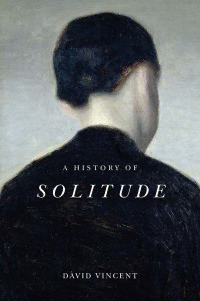
A History of Solitude PDF
Preview A History of Solitude
Cover Page: ii Front Matter Page: iii 1 Introduction: Solitude Considered Page: 1 ‘Zimmerman on Solitude’ Page: 1 The Modern History of Solitude Page: 18 The Tally Ho Stakes Page: 29 Notes Page: 30 2 Solitude, I’ll Walk with Thee Page: 31 Clare, Keats, and Solitude Page: 31 The Crusoe of His Lonely Fields Page: 35 Rambling Page: 47 The Wild Page: 59 A Life Apart from Other Things Page: 68 Notes Page: 70 3 Home Alone in the Nineteenth Century Page: 71 The Threat of Idleness Page: 71 Patience and Other Pastimes Page: 75 Networked Solitude Page: 83 Out of Doors Page: 93 The Invalid in the Home Page: 102 Notes Page: 111 4 Prayers, Convents, and Prisons Page: 112 Solitary Spiritual Communication Page: 112 Enter into Thy Closet Page: 115 Sisterhoods and Convents Page: 122 The Terrors of Solitude Page: 132 To be Alone with Him Page: 150 Notes Page: 152 5 Solitude and Leisure in the Twentieth Century Page: 153 Peace and Quietness Page: 153 Comfort and Communication Page: 155 The Pleasures of Solitude Page: 163 A Companion to Me in Solitude Page: 173 Fishing and the Universe Page: 179 Notes Page: 181 6 The Spiritual Revival Page: 182 The Immense Indifference of Things Page: 182 Exploring Nature Page: 185 Nautical Solitude Page: 194 Modern Solitary Confinement Page: 202 The Monastic Revival Page: 208 The New Spiritualism Page: 213 Notes Page: 219 7 The ‘Epidemic of Loneliness’ Revisited Page: 220 The Rise of Loneliness Page: 220 The Panic Page: 223 Loneliness and Solitude Page: 235 Notes Page: 246 8 Conclusion: Solitude in the Digital Era Page: 247 Notes Page: 259 Index Page: 336 End User License Agreement Page: 342
Description:Drawing on a wide array of literary and historical sources, David Vincent explores how people have conducted themselves in the absence of company over the last three centuries. He argues that the ambivalent nature of solitude became a prominent concern in the modern era. For intellectuals in the romantic age, solitude gave respite to citizens living in ever more complex modern societies. But while the search for solitude was seen as a symptom of modern life, it was also viewed as a dangerous pathology: a perceived renunciation of the world, which could lead to psychological disorder and anti-social behaviour.
Vincent explores the successive attempts of religious authorities and political institutions to manage solitude, taking readers from the monastery to the prisoner’s cell, and explains how western society’s increasing secularism, urbanization and prosperity led to the development of new solitary pastimes at the same time as it made traditional forms of solitary communion, with God and with a pristine nature, impossible. At the dawn of the digital age, solitude has taken on new meanings, as physical isolation and intense sociability have become possible as never before. With the advent of a so-called loneliness epidemic, a proper historical understanding of the natural human desire to disengage from the world is more important than ever.
The first full-length account of its subject, A History of Solitude will appeal to a wide general readership.
